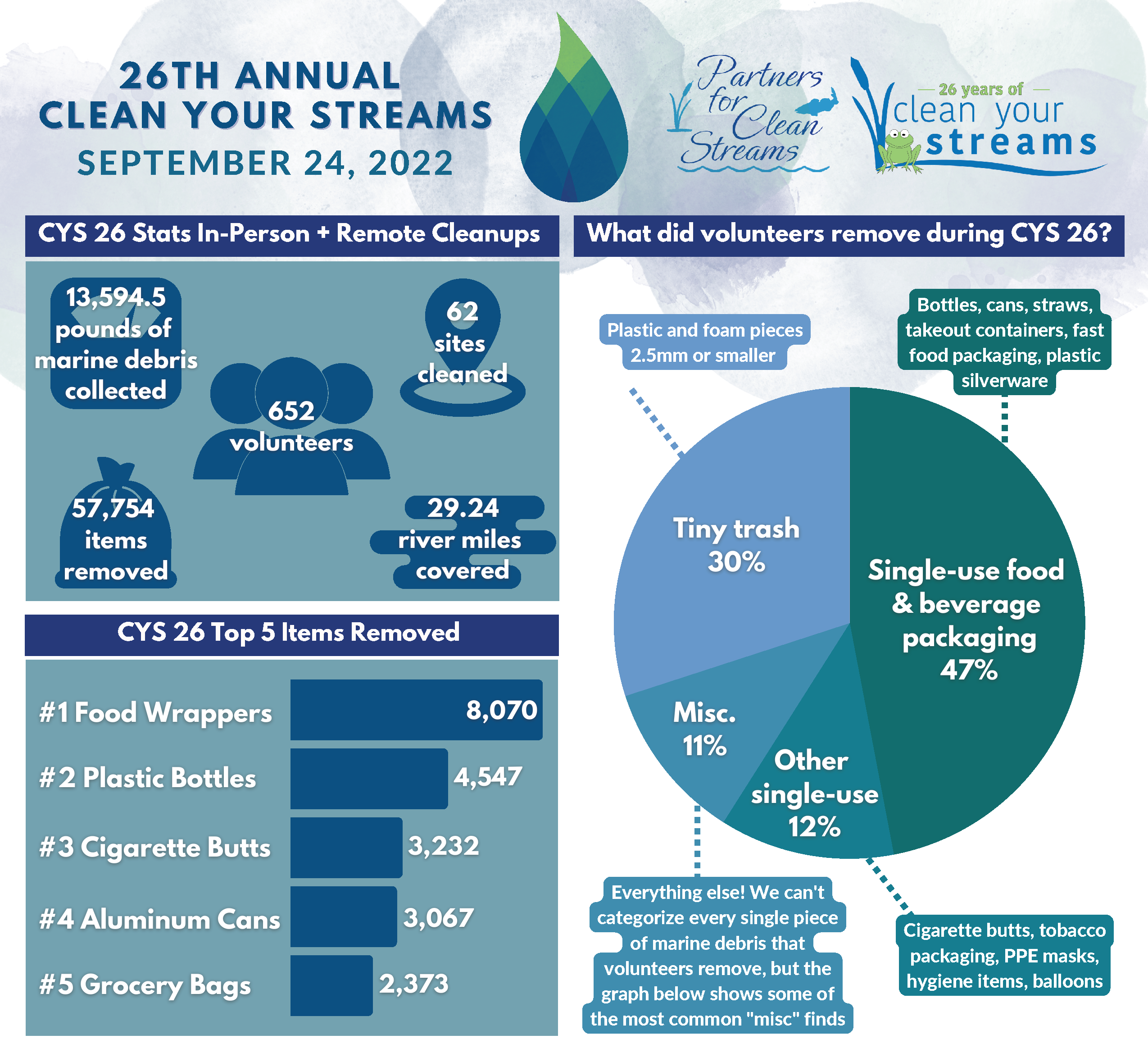 Most trash in our Great Lakes doesn’t get tossed out of a boat. Marine debris starts on land, and via wind, storm drains, and connected waterways, can travel far. Learn more about what we find on CYS Day and how it gets there.
Most trash in our Great Lakes doesn’t get tossed out of a boat. Marine debris starts on land, and via wind, storm drains, and connected waterways, can travel far. Learn more about what we find on CYS Day and how it gets there.
Where does marine debris start?
• Litter from garbage and recycling bins can overflow or simply spill on collection day, especially if trash is unbagged, if bags are not tied up, or if bins are uncovered.
• Litter discarded from pedestrians can accumulate near fast food or convenience stores, near public transit stops, and at outdoor events.
• Trash from cars and trucks can blow from garbage trucks and uncovered truck beds, as well as intentional littering at freeway on/off ramps.
• Illegal dumping purposely, either on land or into waterways, still sadly occurs.
How does trash travel?
• Storm drains and the stormwater system are most people’s closest connection to their local creeks and rivers. Trash can get washed into storm drains by rain or blown by wind.
• Trash can also be blown or flow directly into a ditch or creek.
• Connected, smaller waterways carry trash to larger rivers, then ultimately into Lake Erie.
What do we find on Clean Your Streams Day?
• Unsurprisingly, we find lots of light items that are easily carried by the elements! Over the past few years, we increasingly find single-use plastic items, most often food and beverage packaging. Check out the infographic below for a detailed breakdown of last year’s 26th Annual Clean Your Streams finds.

